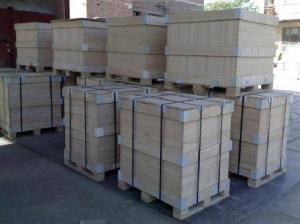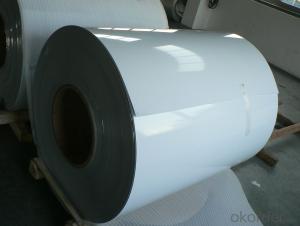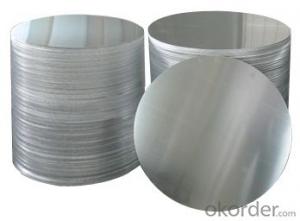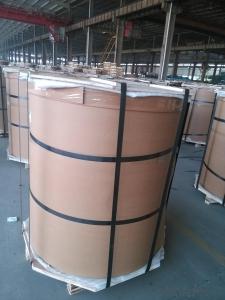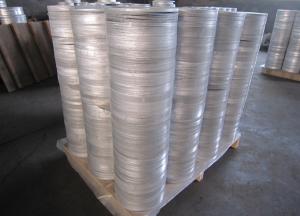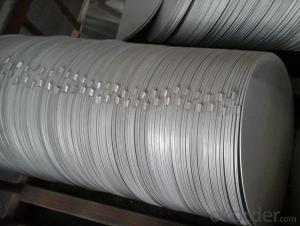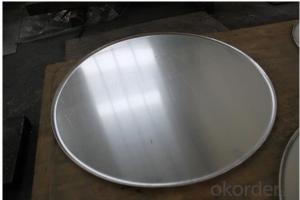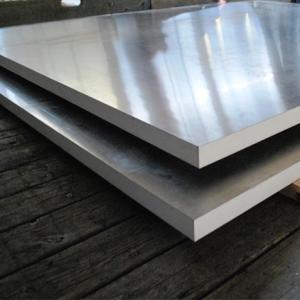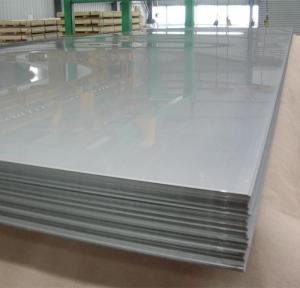4' X 8' Aluminum Sheets for Circle Cutting of Cookware
- Loading Port:
- Shanghai
- Payment Terms:
- TT OR LC
- Min Order Qty:
- 2 m.t.
- Supply Capability:
- 5000 m.t./month
OKorder Service Pledge
OKorder Financial Service
You Might Also Like
Specification
1.Structure of Aluminium Coils for Circle Cutting of Cookware
Aluminium Coils for Circle Cutting of Cookware can be rolled down to aluminium coil,sheet,circle ect. The alloy AA1050 is widly used in building, industry ect. Its weight is much lower than steel. So many customers choosed aluminium material instead of steel.
2. Main features of Aluminium Coils for Circle Cutting of Cookware
a.Competitive price---We have our own mills and can produce mill finished aluminium coils, so we can control the production cost better.
b.Professional after-sale service---We have more than 15 years exportation experience and you need not worry about the exporation problems.
c.Fast delivery time---We can control the delivery time within 35 days.
3. Image of Aluminium Coils for Circle Cutting of Cookware
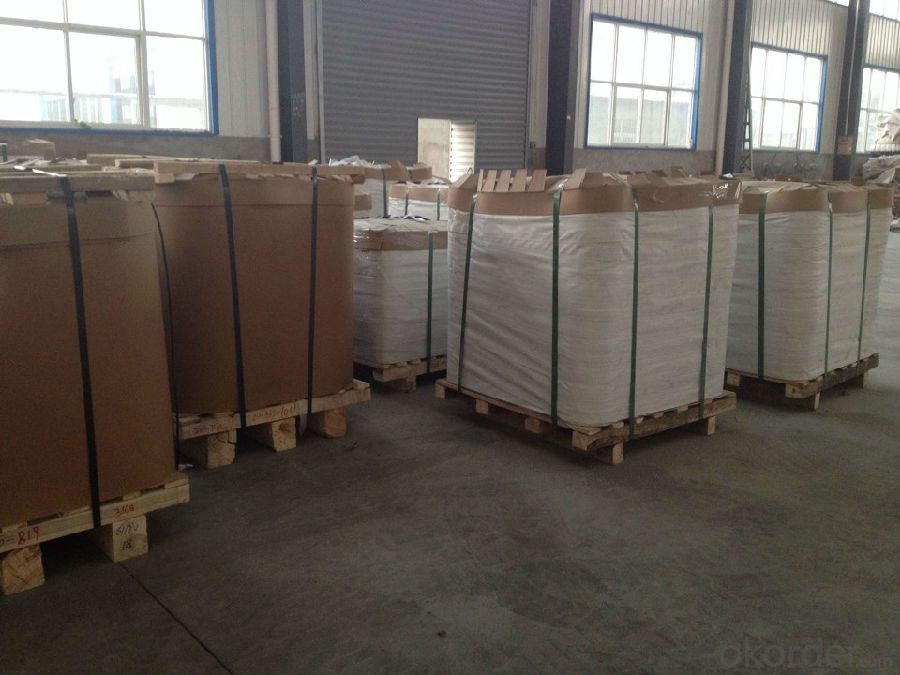
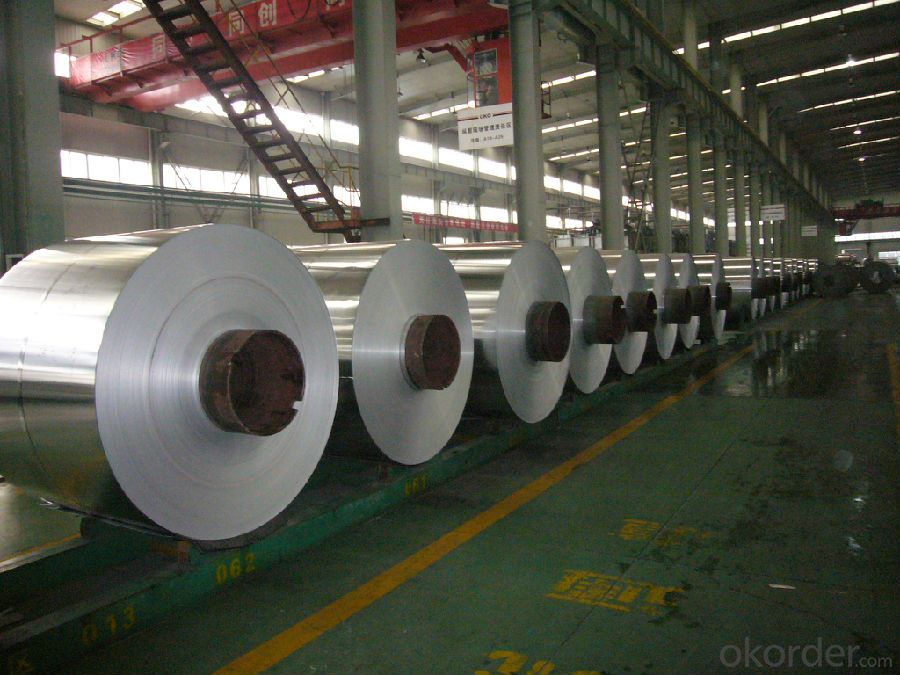
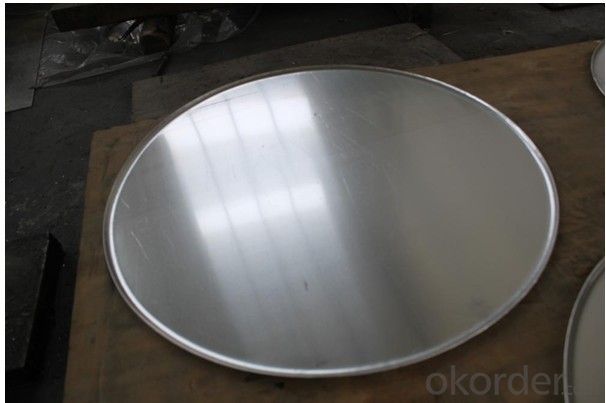
4. Product Specification of Aluminium Coils for Circle Cutting of Cookware
| Alloy | Temper | Thickness | Width | Weight |
| AA1050 | H14 | 0.2-3MM | 1000-1800MM | 2 tons |
5.FAQ of Aluminium Coils for Circle Cutting of Cookware
What is the quality standard?
---Usually our standard is GB3880-2006
What is the largest width?
---It is 2300mm
What is the MOQ?
---Usually we can accept 80 tons.
- Q: How does aluminum sheet perform in high-pressure applications?
- Aluminum sheet performs well in high-pressure applications due to its high strength-to-weight ratio and excellent corrosion resistance. It can withstand elevated pressures without deforming or rupturing, making it a reliable choice for various industries such as aerospace, automotive, and marine.
- Q: Are aluminum sheets easy to clean and maintain?
- Aluminum sheets prove to be fairly effortless to clean and upkeep. Due to its innate resistance to corrosion and rust, aluminum stands as a material requiring minimal maintenance. When it comes to cleaning aluminum sheets, a gentle soap and water solution, combined with a soft cloth or sponge, will suffice. It is advisable to refrain from utilizing abrasive cleansers or scrub brushes, as they possess the potential to mar the surface. Furthermore, it is imperative to thoroughly dry the aluminum sheets following cleaning in order to prevent the occurrence of water spots or stains. Routine maintenance entails promptly wiping away any spills or stains and periodically administering a protective coating to enhance its durability. All in all, aluminum sheets present themselves as a convenient option for individuals in search of a material that is both easy to clean and maintain.
- Q: Are 101 aluminum sheets suitable for interior design or architectural applications?
- Yes, 101 aluminum sheets are suitable for interior design or architectural applications. 101 aluminum is a common alloy that offers good strength, corrosion resistance, and excellent formability. It can be easily cut, shaped, and fabricated to create various architectural elements such as wall panels, ceilings, furniture, and decorative accents. Additionally, 101 aluminum sheets can be finished with different coatings or textures to enhance their visual appeal and durability. Overall, 101 aluminum sheets are a versatile and cost-effective choice for interior design and architectural applications.
- Q: Can aluminum sheet be used for electrical enclosures?
- Yes, aluminum sheet can be used for electrical enclosures. Aluminum is a commonly used material in the electrical industry due to its excellent conductivity, corrosion resistance, and lightweight properties. It provides good shielding against electromagnetic interference and is easy to fabricate into various shapes and sizes for enclosures.
- Q: Hey I just noticed that my deodorant/antiperspirant has aluminum in it. I remember reading that this is bad for you. My question is, will this be dangerous for my health in the long run?
- Yes. Use natural.
- Q: Does anyone know why Mercury -(Thimerosal) is used in Flu Vaccinations and where Mercuryisnot used Aluminium in other vaccines ? While these are known to be toxic metals, can these cause headaches, severe hot burning heads and or Sinusitus ?
- It costs several cents more to manufacture 10 single dose vials that do not require mercury, than one multi-dose vial that does require mercury. Your health is worth just a few cents to these people. Aluminum is used in non-live virus vaccines in order to cause inflammation in the body, which produces a stronger immune response to the vaccine.
- Q: Are the aluminum sheets suitable for manufacturing solar panel backings?
- Aluminum sheets, indeed, prove to be a fitting choice for the production of solar panel backings. With its exceptional properties, aluminum has gained significant popularity in the solar industry. Its lightweight nature, durability, and resistance to corrosion make it highly suitable for outdoor applications. Furthermore, aluminum exhibits a remarkable ability to conduct heat effectively, a critical factor for ensuring the efficient operation of solar panels. Moreover, the recyclability of aluminum makes it an environmentally conscious option for solar panel manufacturing. All in all, aluminum sheets serve as an appropriate material for the fabrication of solar panel backings.
- Q: What are the different heat treatment options available for aluminum sheets?
- Aluminum sheets can undergo various heat treatment options, each imparting distinct characteristics and properties to the material. 1. Annealing: To relieve internal stresses and enhance ductility and machinability, the aluminum sheet is heated to a specific temperature and gradually cooled down. 2. Solution Heat Treatment: This treatment involves subjecting the aluminum sheet to high temperatures and swiftly cooling it in water or another cooling medium. By dissolving and homogenizing alloying elements, solution heat treatment improves strength and hardness. 3. Precipitation Hardening: Also known as age hardening, this treatment is typically performed after solution heat treatment. It entails heating the aluminum sheet at a lower temperature for a specific duration, allowing alloying elements to precipitate and form fine particles. This process enhances strength and hardness without compromising ductility. 4. Stress Relieving: To alleviate residual stresses developed during fabrication or machining, the aluminum sheet is heated to a specific temperature and gradually cooled. This reduces the risk of distortion or cracking. 5. Hardening: Achieving hardening involves heating the aluminum sheet to a specific temperature and rapidly quenching it. This process boosts strength and hardness, making the material suitable for applications requiring high strength-to-weight ratios. It is important to consider the desired properties and application requirements when selecting a heat treatment option for aluminum sheets. Seeking guidance from a metallurgical expert or referring to material specifications can aid in determining the most appropriate choice.
- Q: What are the different grades of aluminum sheet?
- There are various grades of aluminum sheet available, including 1100, 2024, 3003, 5052, 6061, and 7075. These grades differ in terms of their alloy composition, strength, and intended applications.
- Q: Can aluminum sheets be used for lithographic printing?
- Indeed, lithographic printing can make use of aluminum sheets. This widely-used printing method, also referred to as offset printing, involves the transfer of an image from a plate onto a rubber blanket and subsequently onto the printing surface. Aluminum sheets are frequently employed as the foundational material for lithographic plates due to their exceptional durability, lightweight composition, and capacity to retain intricate details. Typically, these aluminum sheets utilized in lithographic printing are coated with a photosensitive emulsion, facilitating the precise and accurate transfer of the image onto the printing surface. Consequently, aluminum sheets represent an optimal selection for lithographic printing, particularly for extensive and high-quality printing endeavors.
Send your message to us
4' X 8' Aluminum Sheets for Circle Cutting of Cookware
- Loading Port:
- Shanghai
- Payment Terms:
- TT OR LC
- Min Order Qty:
- 2 m.t.
- Supply Capability:
- 5000 m.t./month
OKorder Service Pledge
OKorder Financial Service
Similar products
Hot products
Hot Searches
Related keywords
